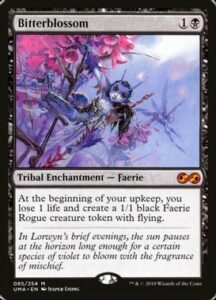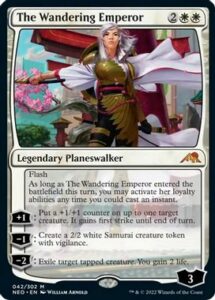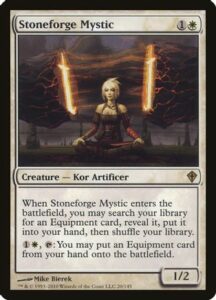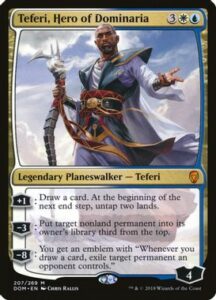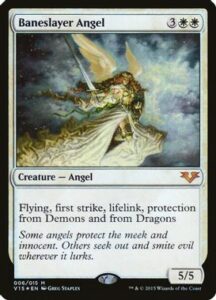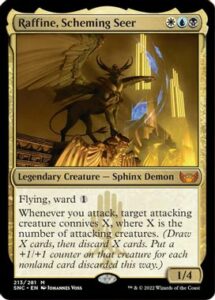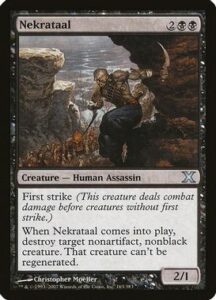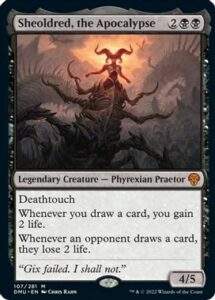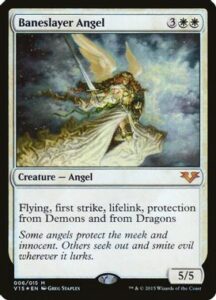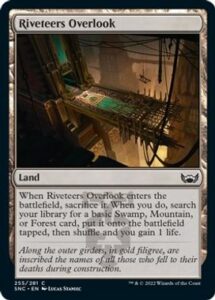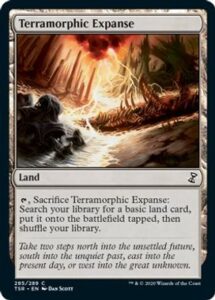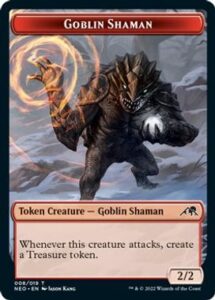Exploring March of the Machine

This past week I had my nose to the grindstone focusing on Shadows Remastered for the Draft Open, so this week I’m getting caught up on the previews I missed and will go over some of my favorites. We also have a whole new card type, battles, to discuss.
Let’s look at some of the more exciting cards in March of the Machine and start by talking about battles.
Battles

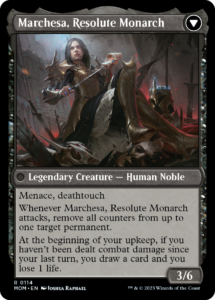
If you missed it, battles is a new card type that provides value on the front side and then comes into play with their own life tota. You can attack like a planeswalker, and when the battle is won and its “loyalty” becomes zero, it transforms into something else to provide more value.
By nature, this card type will be better on the play. You’re in a much better position to attack it on the play and potentially play the battle then you get to attack and flip it the same turn.
Let’s look at this first battle that looks interesting as an example of how the play patterns may work.
Invasion of Tolvada
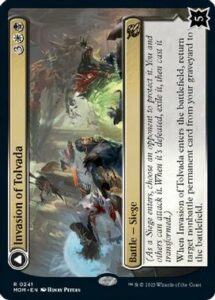
For five mana, you get a strict upgrade to an old card Obezdat’s Aid. This card looks custom designed to squeeze right into Atraxa builds, as it can reanimate the Atraxa, find more copies of Invasion, and after attacking it once with the Atraxa, you’ll be able to win the battle and provide yourself with a token engine of 2/1 flying lifelinkers, a Bitterblossom if you will.
This card could play in all kinds of token decks as well as The Broken Sky backside will pump your whole team. If you’re a go-wide deck, you’re likely better equipped to play the battle and flip it in the same turn, especially if you’re able to bring back a card like Brutal Cathar, Liliana of the Veil, or anything that can remove a blocker from play to allow whatever board presence you’ve created in the first few turns to flip the battle immediately.
Archangel Elspeth

I’m not very big on Archangel Elspeth. It’s competing directly in the mana slot with The Wandering Emperor, which plays much better from behind and doesn’t force you to commit your mana at sorcery speed. While it’s a cool callback to the original Elspeth, Knight-Errant, it’s likely a bit worse given it needs to minus to make a creature fly and cards have gotten a lot more powerful. Once the Wandering Emperor rotates, if we have an aggressive white Standard deck, Archangel Elspeth may fill a role, but it would likely only be in the event we see true control decks or if you get a powerful enough battle you want to flip using the minus to send a creature to the sky to win the battle on curve.
Sword of Once and Future
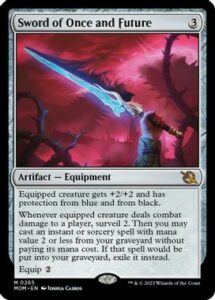
While this sword looks really cool, Swords have long been too weak for constructed outside of Stoneforge Mystic decks, many of which don’t play many instants and sorceries these days, which makes this Sword worse than it may look on its face.
Even for my cube I’m reluctant to add this because it’s worse than other swords in Mono White Aggro. I love Swords and look back fondly on the days where they were playable constructed cards, but they’re too slow and clunky, and Sword of Once and Future is no different.
Zurgo and Ojutai
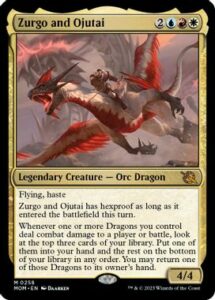
This is a strong version in the Glorybringer cycle. A 4/4 flying haste with upside is the going rate on a card that’s seen tons of Standard play, and Zurgo and Ojutai isn’t different. Depending on the game state and match-up, this card will play out in tons of different ways—having the ability in a game of draw-go to play this attack, get a free Anticipate out of the deal, and then you can decide if you want to leave it in play or bring it back to your hand to keep it protected. When you’re behind you’ll likely need to spend mana on something else, but if you’re far ahead you can keep them in an Ojutai lock, never letting them interact with it unless it’s on the stack.
While I’m not sure this card is worth building a Jeskai deck around, it’s certainly a card I’d test in any deck that it can be reliably cast. Unfortunately, we don’t have a Jeskai Triome, but we have a plaza of heroes that may do some work casting Zurgo and Ojutai.
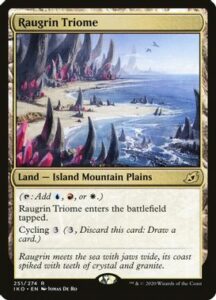
Borborygmos and Fblthp
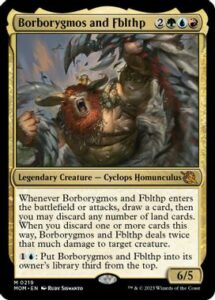
This is a tough one to evaluate. On one hand, it’s at rate for a strong creature, draws an extra card when it comes into play, and even has a way to keep itself in the game by putting itself third from the top. Five-mana cards need to do a lot these days to compete, however.
Borborygmos and Fblthp can take out a creature every turn while funneling through lands. When I look at this card, the first card that comes to mind is Slogurk, the Overslime. Together the cards can create an engine. They’re both legendary and will likely want you to play a lot of lands with Channel Lands to use as spells. This is certainly something I’m interested in looking at on the sets release. While this card doesn’t quite look there, it may be a diamond in the rough in a Slogurk deck.
Lithomantic Barrage
This is another card in a strong sideboard card cycle. I generally like these cards since they see play across formats and give a variety of sideboard options. This one can kill both a Teferi, Hero of Dominaria and a Baneslayer Angel much like a Fry but at sorcery speed. This card will see cross-format play in small numbers.
Importantly, this card kills Raffine for a single mana, which may prove important, especially after rotation.
Sheoldred
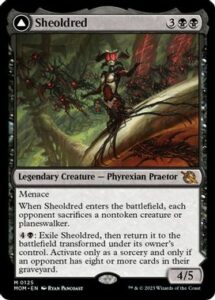

I find the name of this card quite funny, as four-mana Sheoldred already sees tons of play. There’s a whole cycle of these flip Praetors, and at a glance Sheoldred seems to slide right into Standard as the best of the bunch. It’s in the best color and while it won’t always get what it’s looking to kill, it seems like Sheoldred will often play out like a five-mana Nekrataal and will in many spots be a clean answer to a Sheoldred, the Apocalypse.
Sheoldred occupies the same mana slot as Invoke Despair. While the front side isn’t anything to sneeze at, the kind of deck that will play Sheoldred best is a deck like Grixis Midrange that plays lots of interaction and drags the game out, using Sheoldred as a top-end card that can easily find its opponent with the requisite eight cards in the graveyard to flip into The True Scriptures.
So far, Sheoldred seems like a playable card if the format looks a lot like it does now. If it shifts and there are a lot of cards like Spirited Companion and other leftover creatures left in play, the front side won’t be justifiable enough. Context of the format will matter a lot for Sheoldred, but this card looks solid to me if we could just slide it right into Grixis Midrange right now.
Boon-Bringer Valkyrie
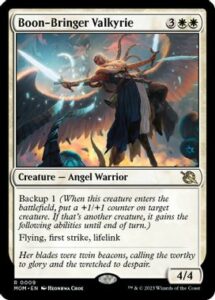
This is a Baneslayer upgrade of sorts. Boon-Bringer Valkyrie is destined to see play somewhere, but I want to acknowledge it’s in some cases worse than Baneslayer given that it can die to Rending Volley with the backup trigger on the stack. However, the backup ability does provide a lot of game decisions with the creature, as you’ll often want to backup a creature before to get an immediate use of flying, first strike, and lifelink it will give to a creature for a turn. I like the backup mechanic since it will provide you with some interesting decisions and make playing a card like Baneslayer Angel more of a strategic choice than slam it and cross your fingers it survives. https://www.95mtg.com/singles/magic-2010/m10-baneslayer-angel-4/
It notably dies to Lithomantic Barrage. In red decks like Mono Red aggro, five-damage-based removal is going to be a barrier to entry to compete with Boon-Bringer Valkyrie and Sheoldred, the Apocalypse.
Deeproot Wayfinder
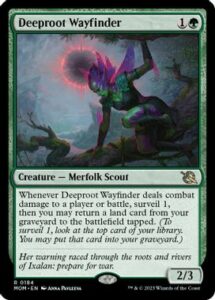
It’s a sweet two-drop that has a real cut down issue, but if you get it going and connect even once to get an early mana advantage it will start a snowball to roll down hill.
This card is a Merfolk, but I see it more as a traditional midrange card that can block Fable tokens and swing through them. While this card isn’t likely a format all-star, it reminds me a lot of a card like Grim Flayer that will be a nice two-drop on the play when you can play a turn ahead and clear the path for it.
I could see a world where this finds a home in a Jund deck alongside Soul of Windgrace with Riveteers Overlook and perhaps Terramorphic Expanse. While the card looks only OK, there’s something to be said for the upside of it connecting and putting a land into play immediately. We’ve seen how strong producing additional mana turn after turn can be with Goblin Shaman tokens from Fable, and this puts a land into play permanently while also giving you the ability to scry and find what you’re looking for. I’m excited to give this card a try in Standard, though I suspect it falls short outside of Standard.
Monastery Mentor
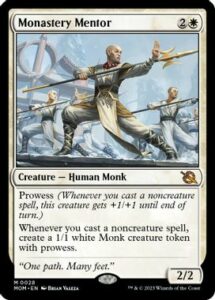
I’m not quite sure what to think about Monastery Mentor. It’s unlikely to make waves in Standard initially, as I think other powerful three-drops are better right now. It’s asking you to play a lot of non-creature spells, which generally leads to being fairly reactive. However, many of the best cards in Standard right now are creatures, especially the white cards between Skrelv and Thalia. It’s going against the grain. We do see decks like Mono W midrange that play a ton of non-creature spells, so it could find a home there either as main deck or more likely in small numbers out of the sideboard to make sideboarding against an otherwise low creature count tricky, as being too reactive against the deck is not where you want to be.
I’m thinking Mentor sadly will see little play, but I also wouldn’t be surprised to see it shine after another set is released and a rotation. Currently, I think it’s not quite there.
I’m floored at how many exciting cards are in March of the Machine. The set feels a bit higher power level on average, but the ceiling doesn’t look too high yet, which is a good place to be. It almost reminds me of Khans of Tarkir in that way. Next week we’ll likely be back looking at some more exciting cards from March of the Machines, as there are quite a few more I’d like to discuss.







